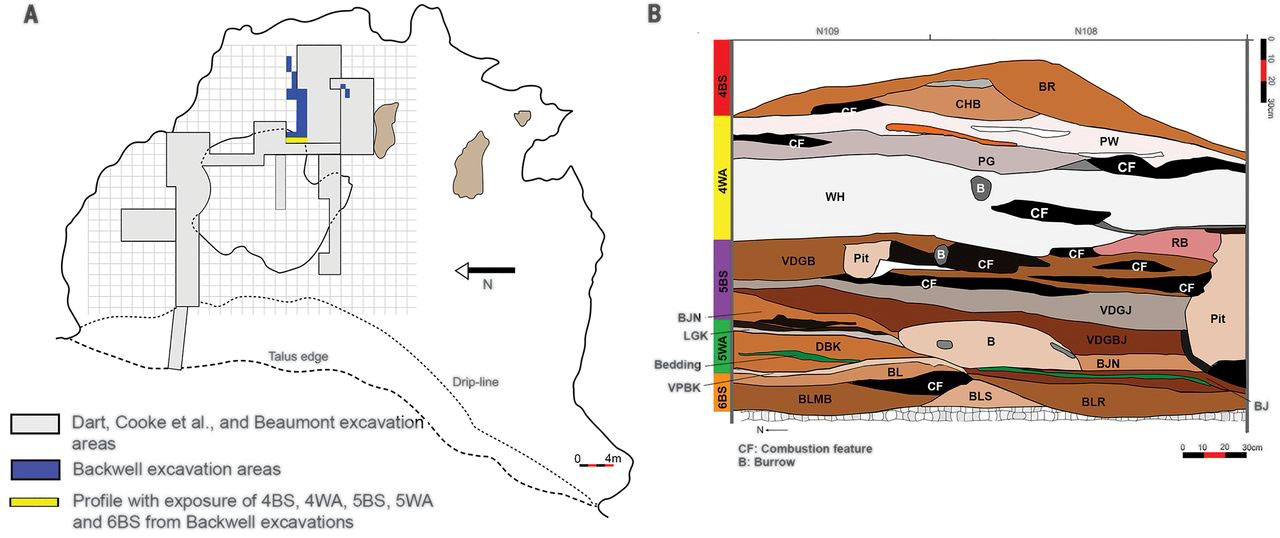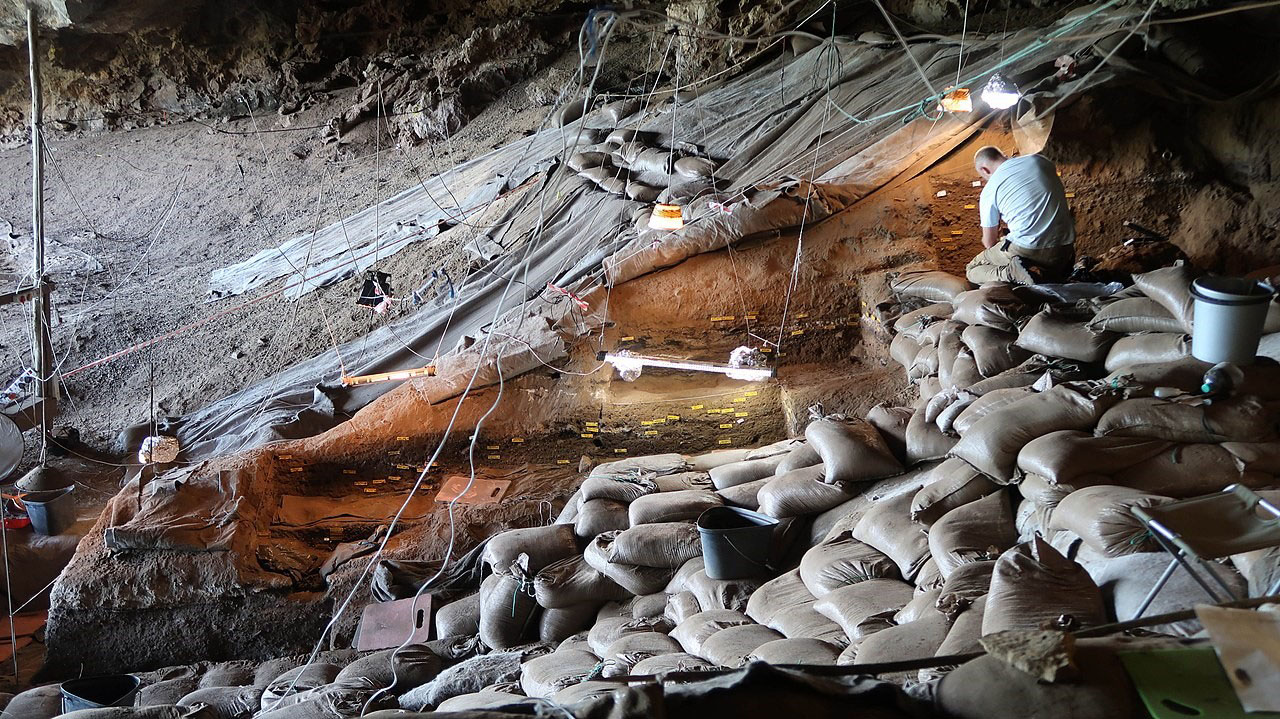
There’s a special place in South Africa called Border Cave where our ancestors already in modern human form lived continuously for nearly a quarter million years.
Excavating in the cave is like reading backward in a history book, finding evidence of each earlier generation in each deeper layer.
The cave has yielded 69,000 artifacts, a treasure trove of clues to human prehistory, and digs continue to this day, with surprising new findings.
For instance, scientists recently discovered the remains of sleeping beds from 200,000 years ago. These consist of fossilized fragments of grass and, surprisingly, ash.
It appears these early modern humans built beds using bundles of grass—the same species that still grows at the cave mouth—on a base of ash. Fine ash is an effective insecticide and repellent as it can clog the breathing organs of crawling insects.
Based on the evidence, scientists believe the cave dwellers would periodically burn the grass bundles in place to kill infestations of fleas, bed bugs or ticks, then leave the ashes and build new grass beds on top of them.
It’s a surprisingly sophisticated cultural practice for such ancient people, which makes us wonder what other knowledge of their environment they had and passed down.
I’m sure researchers will find more clues in Border Cave, and you may hear about them on EarthDate.
Background
Synopsis: For hundreds of thousands of years, ancient humans lived in South Africa’s Border Cave, leaving their history behind in layers of rock that progressively covered the cave floor. New excavations have exposed materials that are more than 200,000 years old, unearthing ancient grass bedding mixed with ash layers. Residents appear to have built their beds on ash to deter pests like bedbugs and ticks and periodically cleaned house by burning the all the grass mats in their sleeping areas and starting again from scratch.
- Border Cave in north-easternmost South Africa contains a beautifully preserved record of Stone Age habitation of this rock shelter that spans from 38,000 to 250,000 years ago.
- The semicircular cave occurs within layers of 182-million-year-old Jurassic rhyolitic lava.
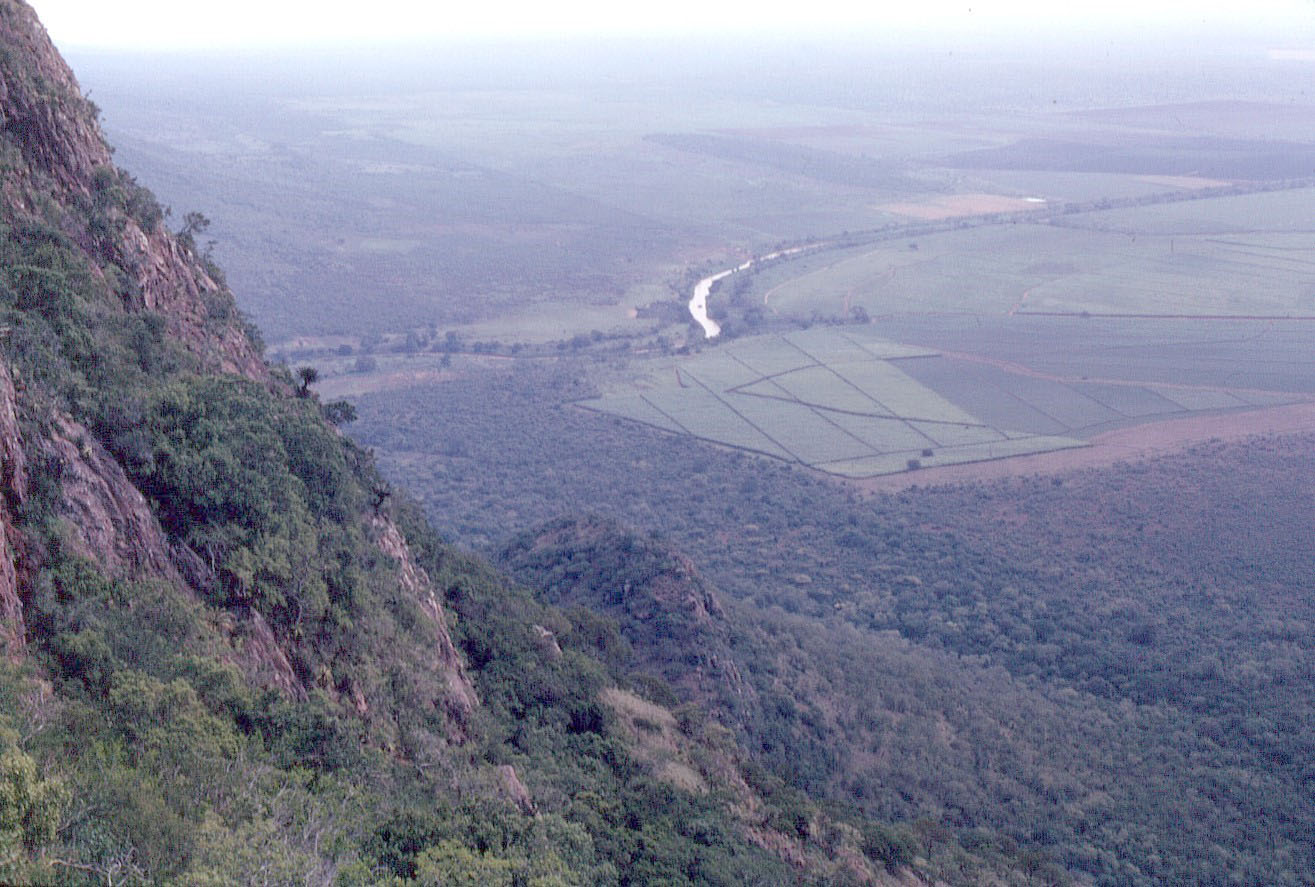
- The earliest recognition of the significance of the cave occurred in 1934, with additional surveys in 1940–42.
- In the 1970s, several Homo sapiens skeletons ranging in age from 80,000 to 120,000 years old were discovered, as well a complete infant skeleton decorated with seashells that came from the coast, more than 40 mi (60 km) away.
- Excavations produced the remains of 43 mammal species that had been brought to the cave, including three that are now extinct.
- Sedimentary layers held more than 69,000 artifacts that document details of the inhabitants’ daily life, divulging older and older groups of occupants as researchers carefully exhume deeper units.
- A 3-inch (7.7 cm) piece of a baboon fibula found in the cave is thought to be the oldest mathematical artifact ever discovered at about 44,000 years old.
- It resembles calendar sticks used by modern Namibian San tribes and has 29 deliberately located notches cut by different tools that may represent days of the lunar month.
- A set of 44,000-year-old tools resemble the tools used today by the San people.
- The oldest ash layers located deep in the back of the cave have been dated at more than 200,000 years and include Middle Paleolithic artifacts.
- In 2015, the South African government submitted a proposal to include the cave as a World Heritage site.
- A 3-inch (7.7 cm) piece of a baboon fibula found in the cave is thought to be the oldest mathematical artifact ever discovered at about 44,000 years old.
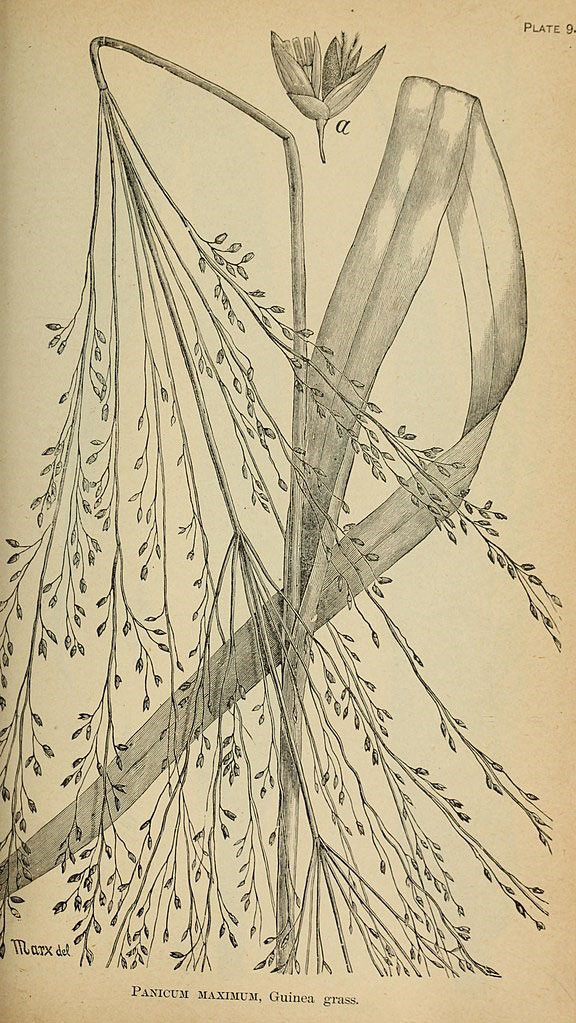
- While many animals construct nests or beds out of plant material, the beds in Border Cave are unique because the grass beds are intermingled with layers of ash.
- Usually, ancient plants are poorly preserved, but the protected cave environment enabled preservation of layers of bundled sheaves of broad-leaved grass that appear to have been used as bedding around 200,000 years ago.
- The dried grass occurs as silicified plant fragments called phytoliths in layers that were originally about 1 ft (30 cm) thick.
- The ancient grass was identified using both spectroscopic and microscopic techniques and was interlayered with ash from burned organic material.
- Chips from knapping stone tools as wells as burned bone and decorative red and orange ocher were found intermixed with the grass, indicating that the mats were likely used for work areas as well as for sleeping.
- The beds appear to have been burned periodically and include remnants of camphor bush charcoal and other aromatic herbs.
- Camphor is used in Africa today as insect repellant. Fine ash repels crawling insects by causing dehydration and blocking their breathing and biting organs.
- It is thought that the bedding may have been prone to infestation by ticks, bedbugs, and other pests, and that the periodic burns cleaned the bedding area while creating an insulated base for the bedding.
- Layer upon layer of earlier bedding rested on broad areas of burned grass bedding and ash, while more recent beds were built on wood ash from hearth fires.
- The oldest grass bedding previously documented in the region was 77,000 years old from the nearby Sibudu Cave. The Border Cave bedding pushes the earliest documentation of this social behavior another 125,000 years farther back in time.
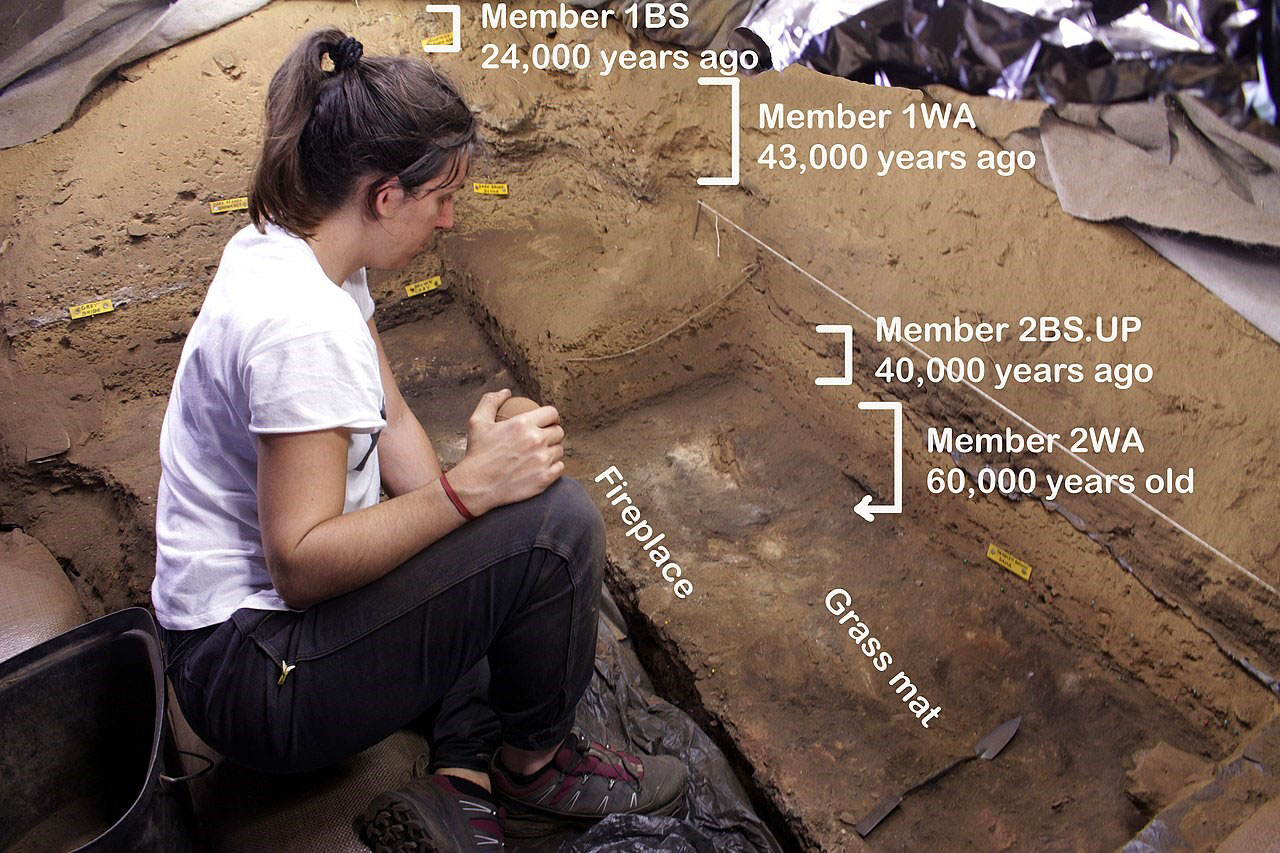
- These fossilized beds give us a unique view into the ability of our Paleolithic ancestors to make themselves comfortable during daily work and rest.
